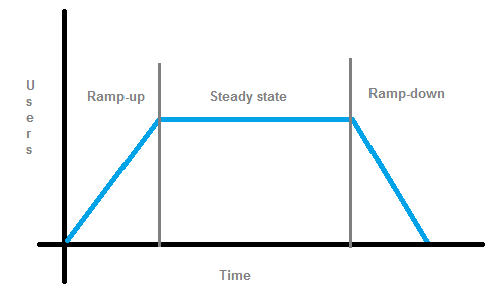The app that you are about to launch lately is not just a product. It holds the beacon of your company.
It has been estimated that 26% of the app that has been download from various app stores are uninstalled within an hour itself.
So how do you ensure, that your app does not suffer the same fate?
Performance!
What better way to test it than performing a load test on your app.
Let’s have a look at it in detail.
Load Testing – What is it?
Load testing process involves artificially creating various load environments for your app, so that the performance of your app will be monitored closely to determine it is stable or not.
How is it Performed?
Check the Parameters and Creating a Work Load Model
First of all there are certain parameters that need to considered before the test begins. They are,
Response Time:
The time in which your app responds to certain inputs
Communication Rate:
Rate at which the software can send and receive requests
Resource Utilization:
While performing the test it has to be closely monitored that how much load the system is taking while interacting with the app.
User Load:
Concurrent user load the app can withstand
The Work Load Model
A work load model will make sure that the app is being injected with correct load parameters at different point of time.
For better understanding here is the detailed video regarding how to construct a work load model.
The test is basically done in definite intervals,
Exactly like that of the diagram below

Creating The Test Cases
While creating test cases it has to be kept in mind that expected result should have a fail or pass section for marking as it would be useful later.
While creating test cases make sure that,
- Actions and scenarios of the testing procedure
- Customise the test case for various inputs
- Replay test cases for verifying the simulation
Execution of Test
When you run the test make sure that the load is increased slowly against the user profile. Between tests make sure that the system has enough breathing time so that it can stabilize. Last but not least, while incrementing make sure that the output of the app is being monitored and recorded.
Slow increase of the load will make sure that the threshold point of the app is marked well.
It is important that the load test is performed in cycles so that each cycle should have a load increment. After each analysis results should be verified and analysed.
Report Analysis:
Indentifying the hindrance for the good performance of any app application is an art. For effective analysis a well experienced testing engineer or the help of
an established software testing company is required as it requires chart analysis and various other forms of mathematical data interpretation.
The result obtained should be compared to that of respective industrial standard benchmark.
Benefits of Performing Load Test on Mobile Apps
- All the functions of the app can be validated
- Speed accuracy and stability of a app can be measured
- User experience can be guaranteed once the app is deployed
- Issues can be rectified before the deployment
- Load capability can be improved
Factors That Need To Be Checked While Performing Load Test On Apps
First of all performance of the app should be impeccable and for that to happen these factors has to be perfect.
- App Loading time
- Power consumption
- Memory consumption
- Hardware /software integration
- Integration with other apps
- How app behaves if its retrieved from background
API/ Server Interaction
While an app interacts with Server via API these factors needs to be checked
- Data transfer between app and the server
- Number of app calls generated to the server
- Server switch time
Network Performance
- Delay time in receiving information from network
- In case of packet loss, the request to the server should be resend
- Network speed
Challenges That Can Come Up in Performing Load Test
- Since Mobile phone comes in various size, shape and OS it’s hard to organize them
- Device fragmentation
- Different app types such as native, web app and hybrid app
- Security of cloud server which performs testing
Reliable Tools Used For Load Testing Apps
An open source modular GUI oriented tool that’s out to use the most now
Written in Scala based DSL the tool has been download over million times
Written in Python the tool is developer friendly tool renowned for its user friendliness


